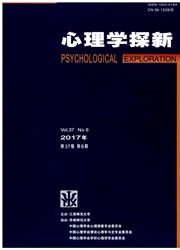

 中文摘要:
中文摘要:
通过采用眼动追踪和主观偏好评定实验分别考察以不同对比度极性、颜色组合呈现的电子线性文本和引导式文本对阅读疲劳的影响。实验1采用电子线性文本形式,考察不同对比度极性和颜色组合对视觉疲劳的影响以及主观偏好和主观疲劳感。结果表明:在电子线性文本中,黄底黑字、绿底黑字和黑底绿字的颜色组合引起的视觉疲劳显著少于其它组合;不同对比度极性的视觉疲劳度无显著差异,并且读者更偏好正极性文本。实验2采用引导式文本形式考察不同对比度极性和颜色组合对视觉疲劳的影响以及主观偏好和主观疲劳感。结果表明:在引导式文本中,不同颜色组合的视觉疲劳无显著差异;而正极性文本引起的视觉疲劳显著高于负极性文本,同样读者更显著偏好正极性文本。结论是读者在电子线性文本和引导式文本的视觉疲劳度存在差异,对阅读疲劳度,电子线性文本反应在不同颜色组合上,而引导式文本则在对比度极性上,而读者对电子文本和引导式文本的主观偏好度一致,即更偏好正极性文本。
 英文摘要:
英文摘要:
The study explored the effects of text - background presentation patterns of electronic linear and guided text on reader' s visual fatigue in two experiments, both employing the methods of eye tracking and questionnaire survey. Experiment 1 focused on electronic linear text. It showed that the color patterns of yellow text on black background, green text on black background, and black text on green background resulted in significantly lower visual fatigue than other color combinations. It also showed that there was not significantly different visual fatigue between positive and negative contrast polarities in the electronic linear text, albeit readers typically preferred positive polarity over the negative one. Experiment 2 focused on electronic guided text. The result showed that in the condition the different color patterns did not caused significantly different visual fatigue levels. On the other hand, contrast polarities played a significant role in reader' s visual fatigue,though, yet again, readers exhibited a preference for positive polarity over the negative one. The conclusion is that the color patterns and contrast polarities' effects on visual fatigue are different for the electronic linear text and for the electronic guided text. When linear text is concerned, color patterns played a significant role in visual fatigue, whereas for guided text, contrast polarities were more important. For both types of text, readers showed a preference for positive contrast polarity over the negative one.
 同期刊论文项目
同期刊论文项目
 同项目期刊论文
同项目期刊论文
 期刊信息
期刊信息
